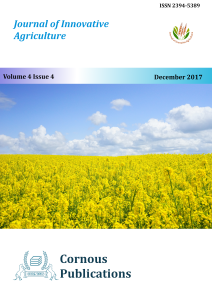
Journal of Innovative Agriculture
Peer Reviewed Open Access Journal
ISSN: 2394-5389 NAAS: 4.05
Submit Manuscript
Peer Reviewed Open Access Journal
ISSN: 2394-5389 NAAS: 4.05
Submit ManuscriptOPEN ACCESS | Published on : 27-Dec-2017 | Pages : 1-8
OPEN ACCESS | Published on : 27-Dec-2017 | Pages : 9-14
OPEN ACCESS | Published on : 27-Dec-2017 | Pages : 15-20
OPEN ACCESS | Published on : 27-Dec-2017 | Pages : 21-28
OPEN ACCESS | Published on : 27-Dec-2017 | Pages : 29-43
OPEN ACCESS | Published on : 27-Dec-2017 | Pages : 1-7
